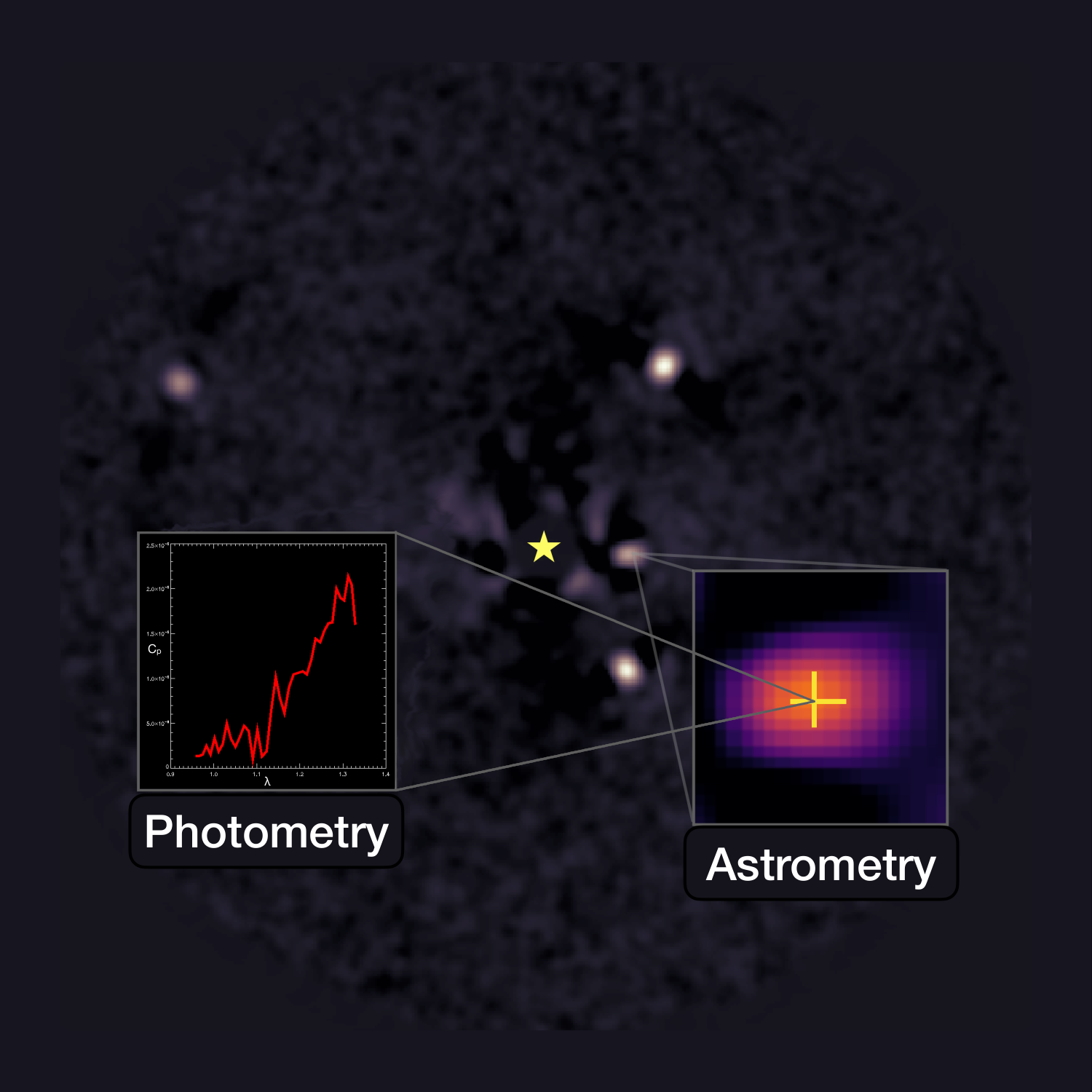Characterization of exoplanets
In the second phase of the Exoplanet Imaging Data Challenge, the focus is exclusively on the characterization of point-like sources (exoplanets) within high-contrast images. The provided data are from two ground-based integral field spectrographs: SPHERE-IFS at the Very Large Telescope (ESO, Cerro Paranal, Chile) and GPI at the Gemini-South telescope (Cerro Pachón, Chile).
The images provided are coronagraphic multispectral images (with a rather low spectral resolving power, R ~50) taken in pupil tracking mode.
Note that it therefore corresponds to the ADI+mSDI data type of the phase 1 of the Exoplanet Imaging Data Challenge (see related Tabs).
Point source characterization in high-contrast imaging consists in two tasks:
(1) Astrometry, that is to say the accurate position of the point source with respect to the star;
(2) Spectrophotometry, that is to say the contrast (i.e. brightness ratio) of the point source with respect to the star, for each available wavelength of the multispectral cube of images (spectrum).
When possible, the extracted values should additionnaly come with (a) the corresponding 1-sigma uncertainties, and (b) the corresponding posterior distribution used to estimate the value and its uncertainties.

in this example, we show the spectrophotometry (left) and astrometry (right) estimated for the planet HR 8799e.